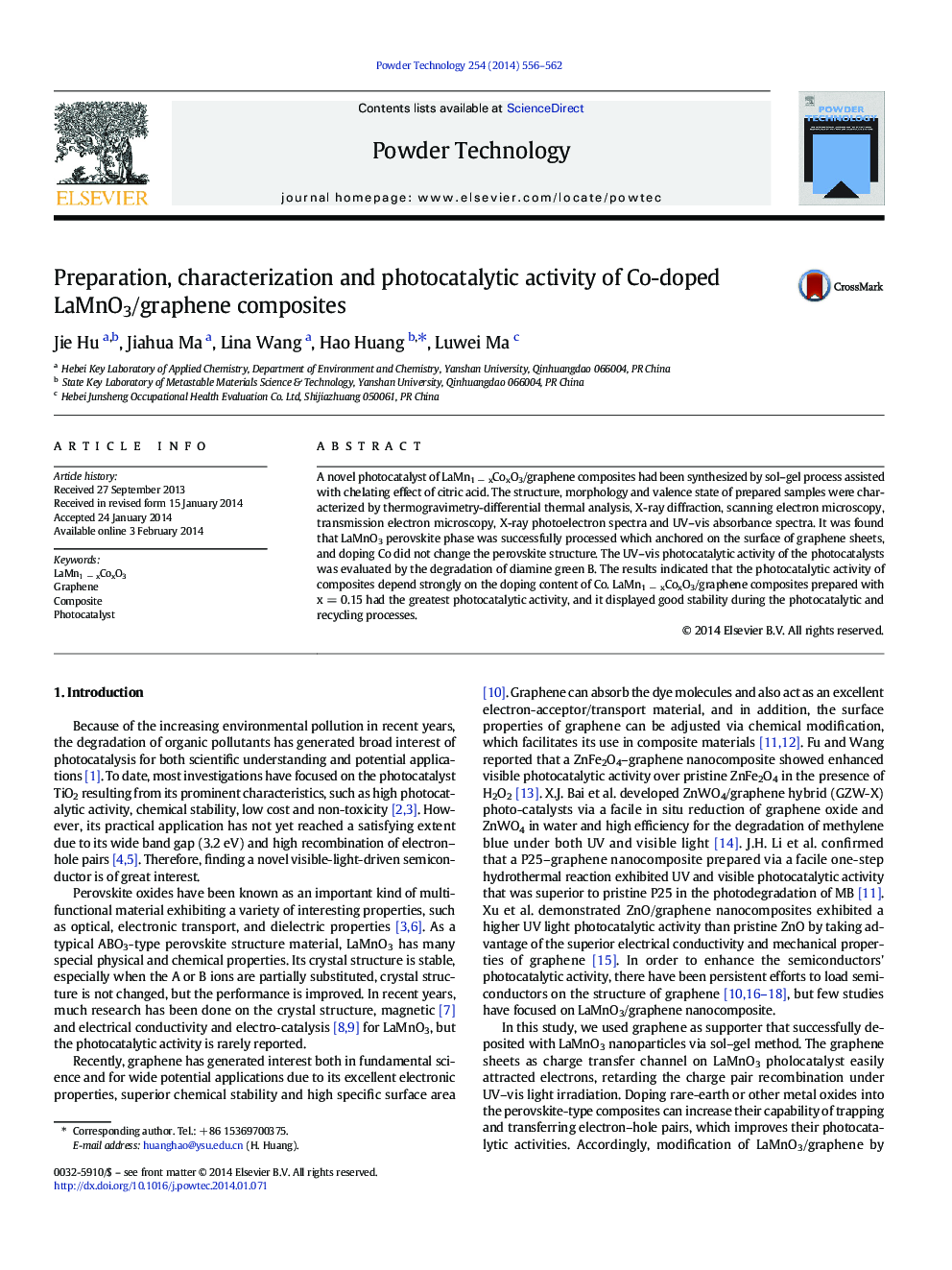| کد مقاله | کد نشریه | سال انتشار | مقاله انگلیسی | نسخه تمام متن |
|---|---|---|---|---|
| 236285 | 465666 | 2014 | 7 صفحه PDF | دانلود رایگان |

• LaMn1 − xCoxO3/graphene (x = 0, 0.1, 0.15, 0.2) composites were synthesized via a sol–gel method and their photo catalytic activity was evaluated.
• LaMn1 − xCoxO3 nanoparticles were successfully anchored on the surface of graphene and doping Co did not change the perovskite structure.
• Doping Co enhances the photocatalytic performance of LaMnO3/graphene composites, and the mechanism was discussed.
A novel photocatalyst of LaMn1 − xCoxO3/graphene composites had been synthesized by sol–gel process assisted with chelating effect of citric acid. The structure, morphology and valence state of prepared samples were characterized by thermogravimetry-differential thermal analysis, X-ray diffraction, scanning electron microscopy, transmission electron microscopy, X-ray photoelectron spectra and UV–vis absorbance spectra. It was found that LaMnO3 perovskite phase was successfully processed which anchored on the surface of graphene sheets, and doping Co did not change the perovskite structure. The UV–vis photocatalytic activity of the photocatalysts was evaluated by the degradation of diamine green B. The results indicated that the photocatalytic activity of composites depend strongly on the doping content of Co. LaMn1 − xCoxO3/graphene composites prepared with x = 0.15 had the greatest photocatalytic activity, and it displayed good stability during the photocatalytic and recycling processes.
The charge transfer mechanism that occurs in the LaMnO3/graphene composite during photocatalytic process is shown in the figure. During the photocatalysis reaction, three processes are crucial, which are: the adsorption of contaminant molecules, the light absorption, and the charge transportation and separation. Due to graphene's giant π-conjugation system and two-dimensional planar structure, the adsorptivity of dyes is improved compared to the bare LaMnO3. On the other hand, graphene can ensure holes and electron transfers quickly because of its high conductivity, and therefore, an effective charge separation can be achieved.Figure optionsDownload as PowerPoint slide
Journal: Powder Technology - Volume 254, March 2014, Pages 556–562